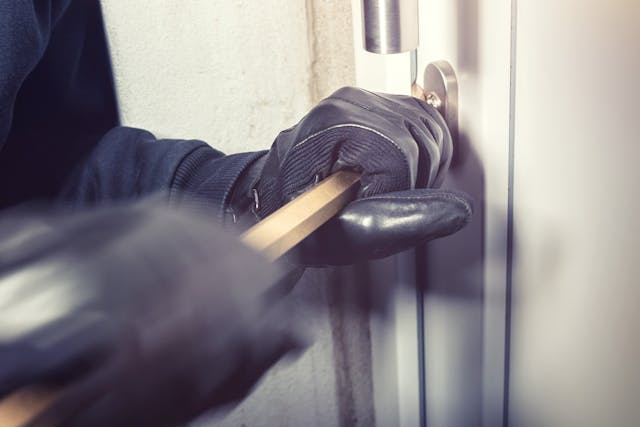So, you’ve dipped your toes into the world of mortgage note investing? Smart move! It’s a fantastic way to diversify your portfolio and generate some solid returns. But, as with any investment, there are risks to be aware of, and one of the peskiest ones? Property squatters.
These individuals occupy vacant properties without legal permission, causing headaches for investors. But fear not! We’re here to shed some light on the issue and provide you with practical tips to navigate this aspect of the real estate investment landscape.
What Are Property Squatters?
Property squatters, also known simply as squatters, are individuals who occupy vacant properties without the owner’s consent. They often move into abandoned homes, foreclosed properties, or buildings awaiting renovation. While their presence may seem harmless at first glance, dealing with squatters can quickly escalate into a legal and financial quagmire for property owners and investors alike. They can turn your investment dreams into a nightmare if you’re not careful.
How Squatters Relate to Mortgage Note Investing
As a mortgage note investor, understanding the implications of squatters is essential. When a property with a mortgage note becomes vacant, whether through foreclosure or other circumstances, it becomes vulnerable to squatting. This can delay the sale or renovation process, leading to potential losses in revenue and increased expenses.
Preventing Squatters in Vacant Properties
1. Secure the Property
The first line of defense against squatters is to secure the vacant property. Change the locks, install security cameras, and consider boarding up windows and doors to deter unauthorized entry. A well-secured property sends a clear message that it’s not an easy target for squatters.

2. Regular Inspections
Keep a close eye on your properties through regular inspections. Visit the premises periodically to ensure they remain vacant and undisturbed. Promptly address any signs of unauthorized entry or occupation, such as broken windows or makeshift shelters.
3. Maintain Active Communication
Stay in touch with neighbors, local authorities, and property management companies in the area. They can provide valuable insights into any suspicious activities or unauthorized occupants in your properties. Timely information can help prevent squatters from establishing a foothold.
4. Legal Notices
Consider posting conspicuous signs indicating that the property is private and unauthorized entry is prohibited. In addition, issue formal legal notices to potential squatters, notifying them of your ownership rights and warning of legal consequences for trespassing.
5. Utilize Property Management Services
If managing vacant properties seems daunting, consider enlisting the services of professional property management companies. They can handle routine inspections, maintenance, and tenant screening, reducing the risk of squatters taking over your investments.
Dealing with Squatters: What to Do
So, what if squatters have already taken over your property? Don’t panic! Here are some steps you can take to address the situation:
1. Verify Squatter Status
Before taking any action, confirm whether the individuals occupying your property are indeed squatters. Document their presence through photographs, witness statements, and any relevant evidence.
2. Know Squatters Rights
Familiarize yourself with local laws regarding squatters’ rights and eviction procedures. While laws vary by jurisdiction, most places have legal mechanisms in place to remove unauthorized occupants from properties.
3. Issuing Eviction Notices

Initiate the eviction process by serving formal eviction notices to the squatters. Follow all legal requirements and deadlines stipulated by local regulations. Failure to comply can delay the eviction process and prolong the squatter’s stay.
4. Seek Legal Assistance
If the squatters refuse to vacate despite receiving eviction notices, seek legal counsel to explore your options. A knowledgeable attorney can guide you through the eviction process and represent your interests in court if necessary.
5. Consider Cash for Keys
In some cases, offering a financial incentive known as “cash for keys” can expedite the squatter’s departure. This involves negotiating with the squatters to vacate the property voluntarily in exchange for a cash settlement.
6. Act Fast
Time is of the essence when dealing with squatters. The longer they squat, the more challenging it becomes to remove them. If you suspect squatters have taken up residence in your property, don’t delay. Take swift action to investigate and address the situation promptly.
7. Stay Persistent
Removing squatters can be a frustrating and time-consuming ordeal, but don’t give up! Stay persistent and follow through with the necessary legal steps until the squatters are successfully evicted and your property is back in your hands.
Minimize Your Risks
While property squatters pose a challenge to mortgage note investors, proactive measures can help mitigate risks and protect your investments. By securing vacant properties, maintaining vigilant oversight, and understanding legal procedures for removing squatters, you can navigate this aspect of real estate investing with confidence. Remember, knowledge is your best ally in the world of mortgage note investing!
Stay vigilant, stay informed, and remember: you’ve got the power to reclaim what’s rightfully yours!
